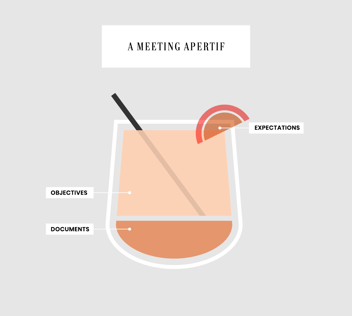
In a time when all of us are looking for answers, it’s easy to forget the importance of a good question
How to stop worrying and love the ‘?’
As leaders, we often feel a responsibility to have all the answers. When that becomes impossible, the last thing we want to do is invite more people to question us. But when uncertainty is at its height, an environment that fosters questions is even more important. How do we know questions are powerful?

Because questions can help rebuild bridges
54% of remote workers feel disconnected from their companies. They report feeling voiceless, or unable to share their ideas; they lack opportunities to collaborate, or are discouraged to do so from lack of visibility. And this was before remote workers made up 100% of your office. Now, problems are compounded by unfamiliar technology, adapting to a new kind of home-life, and the general anxiety that comes with living in a low-energy apocalypse movie.
This lack of comfort makes it harder for some to open up, connect, trust, and communicate with each other virtually. If you are a leader today, in a virtual setting, you may be struggling to display the same level of authenticity and provide your team with the same sense of safety as you did in person.
Encouraging people to ask questions, and asking them yourself, is the first step in rebuilding trust and communication on your team.

Because questions are the only way to innovate
Questions lead to discovery and innovation, they uncover truths, they lead down strange and fruitful avenues, and they often have humble beginnings. This was true 150 years ago when Darwin wondered why weird birds had thick beaks. Now, scientists use the same concepts to study COVID-19 mutations and find a cure.
It was true for Elon Musk when he asked “what are people accepting as an industry standard, when there’s room for significant improvement?” From that question arose Tesla and SpaceX. The former reshaped the electric car industry and the latter took him, literally, to the stars. Together they made him the global face for techno-progress and mad science.
But while doctors save the world and Elon invents the paradigm-shifting space bicycle, you have more local crises to deal with. Inviting inquiry in your meetings is the best first step to solving those as well. MIT Leadership Institute’s Hal Gregersen found that great questions have a have the power to dissolve barriers to creative thinking and channel the pursuit of solutions into new, accelerated pathways. His ‘question burst’ method helped prompt success from teams stagnating in uncertainty.

Because the right question can change your business
The right question from a client or team member can completely shift your perspective on a problem, a project or even your business. That was Softway’s story in 2018, when a veteran client began to ask probing questions about the internal cultural and leadership transformation efforts they’d seen in our company.
Receiving that question was a gift—many clients would be afraid to inquire about a potentially sensitive topic, especially one that didn’t directly relate to our engagement with them—but it was a gift that we’d earned by building a sense of trust and encouraging open engagement.
That question led to Softway helping them with their own cultural transformation, and grew to become the Seneca Series, a radical leadership experience that has now touched more than 1000 leaders across 23 countries.
If questions are the life-blood of progress for organizations and projects, how do you get more? And if you've got lots, how do you get better ones?

Creating a Culture of Conversation
Understanding the power of questions is a crucial step for you and your organization. But while it’s easy enough to motivate yourself to ask more questions, the thought of inspiring the same in your team or clients can be daunting. The good news? It’s simpler than you might think.
Humans are naturally inquisitive. As children we ask around 73 questions a day and that desire doesn’t diminish on its own. Researchers point to a school system that prioritizes recitation of knowledge over the process of discovery, and a legacy work culture known to repeat that mistake. These old ways of thinking are thankfully fading, and you can help.
Beating the barriers
You’re a leader, whether by title or simply by virtue of being the presenter today—that means it’s your job to make questions safer. How?
- Don’t only ask for questions, invite them in
- Q&A is often seen as an add-on that a successful meeting shouldn’t need. For some, “any questions?” sounds the same as “you can leave now.” Instead, try “I expect there are a lot of questions.” Making it clear that you see inquiry as positive rather than antagonizing encourages participation.
- If that feels unnatural, inviting the audience to “share their thoughts” can open up a much broader range of interaction that will nevertheless lead to the same result.
- Offer examples
- After beginning your Q&A portion, start by sharing a question you’ve heard people ask in previous presentations. Often, attendees can feel like they’re taking a social risk by speaking up first. By taking the position of “first asker” yourself, you can alleviate that barrier.
- Acknowledge the obstacle
- “Since no one wants to ask the first question, does anyone want to ask the second one?” Sometimes simply acknowledging the tension is enough to break it. You don’t have to make a joke, but taking a moment to share empathy can help make others more comfortable to continue.
Not enough questions? Learn how to encourage your team.Too many? Or feeling overwhelmed? Learning what makes a question great can help you find the value in anything your team throws at you.
Virtual meetings are here to stay
If you’ve been hoping the virtual office is just another crisis we have to get through, I’ve got some bad news. Amazon, Google, and other tech companies have already announced workers can stay home until 2021, no matter when stay-at-home orders end. Twitter and Square have already approved remote work permanently.
Other companies will follow soon, and other industries won’t be far behind. The good news? Remote work can make people more productive, more creative, and happier, and can have hugely positive financial impacts for companies that adapt well. That said, the disconnection or difficulty it can create in an unprepared workforce is real. But with time and good strategy, that can be fixed
Just Ask helps you close the question gap
No leader can do it on their own, so we made a free digital tool to help. Just Ask is built to make your Q&A simple, powerful, and productive. Four key features make sure you get the most out of your meetings and presentations:
- Asynchronous entry promotes participation
- Technical difficulties, fear of interrupting, or plain old millennial phone anxiety can make it hard to speak up in virtual meetings. Asynchronous entry
- Upvotes help you see what’s important
- The upvote system lets your audience raise a question’s profile, making it easy for you to see and address what’s important to them. Plus, built-in interactivity makes participation easier and more enjoyable.
- Anonymity brings honesty
- Allowing anonymous questions ensures that everyone can walk away with full understanding, without the messy embarrassment of saying “I don’t get it.”
- Answer-in-text makes sure nothing gets missed
- Every question deserves an answer, but sometimes there’s not enough info or just not enough time. Just Ask pages live as long as you want them to, making it easy to come back later and answer important questions that need more attention.
Try it now in any meeting, no questions asked.






